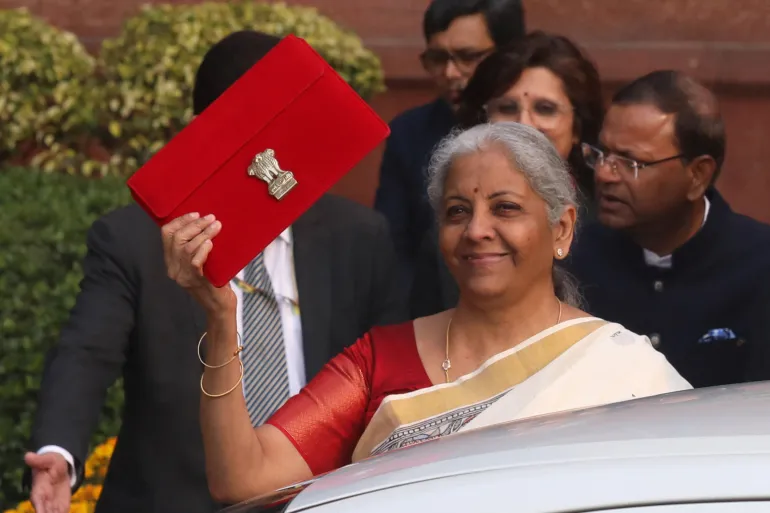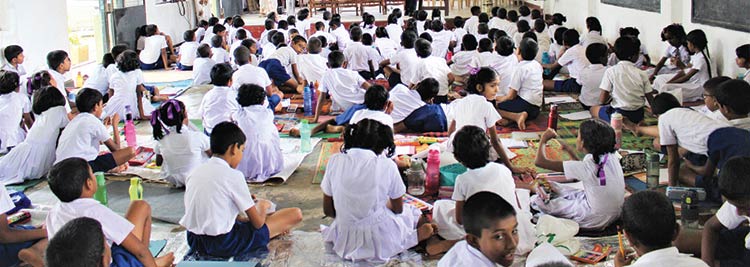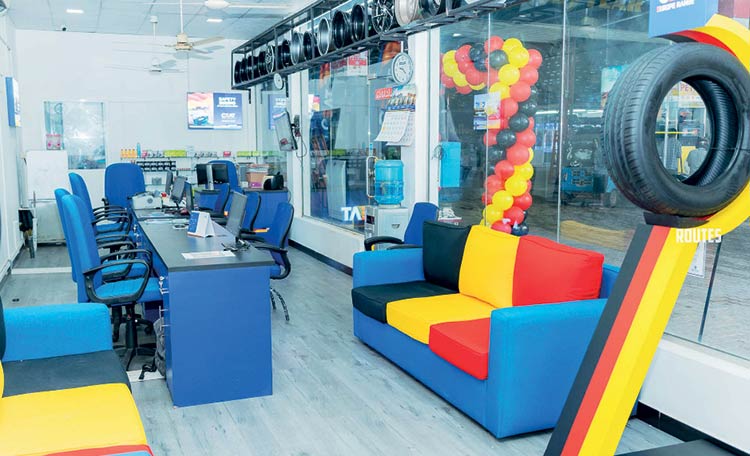Business
India’s budget gives tax relief to middle class to boost spending, growth

Indian Prime Minister Narendra Modi’s government has unveiled an annual budget focused on appealing to the country’s middle class and spurring economic growth by boosting agriculture and manufacturing.
Announcing the annual budget in parliament on Saturday, Finance Minister Nirmala Sitharaman said people earning up to 1.28 million Indian rupees ($14,800) per year will not have to pay any taxes, raising the threshold from 700,000 rupees.
The government also lowered tax rates for people earning above the new threshold, as the world’s fifth-largest economy aims to boost domestic demand amid uncertainty over the global economic outlook due to potential new tariff barriers.
“The new structure will reduce taxes on middle class and leave more money in their hands, boosting household consumption, savings and investment,” Sitharaman said.
The move will result in an annual 1 trillion Indian rupee ($11.6bn) hit to Treasury revenues, the Reuters news agency reported.
The world’s most populous country is expected to post its slowest growth in four years next year amid frail urban demand and weak private investment, while stubbornly high food inflation has dented disposable incomes, the agency said.
Measures to assist the poor, youth, farmers and women were also included in the budget for 2025-26, Sitharaman said.
Per capita income is about $2,700 for India’s population of 1.4 billion, with about one-third considered middle class.
The tax cut is “likely to spur consumer demand and savings by the middle class that has faced challenges from elevated inflation and lower income growth”, Sakshi Gupta, economist at HDFC Bank, told Reuters.
To balance the revenue lost, the government has budgeted a modest increase in capital spending this year, which will rise to 11.21 trillion rupees in 2025-26 compared with a lowered 10.18 trillion in the current year.
Modi, in his third term as the country’s prime minister, has faced pressure to appeal to the country’s middle class and generate more jobs to help sustain growth.
The government will also boost productivity across the agriculture sector by launching a nationwide program to push high-yielding crops, focusing on the cultivation of pulses and cotton production.
Sitharaman said the programme will target at least 17 million farmers and raise the limit for subsidised credit offered to them from $3,460 to $5,767.
The government also plans to formally register India’s gig workers and ease their access to healthcare. Sitharaman said the government will issue them identity cards and help them access welfare initiatives.
India’s gig economy could employ more than 23 million people by 2030, according to estimates by government think tank, NITI Aayog.
Sitharaman also announced a new fund for startups and said the government will provide more money to promote innovation in partnership with the private sector.
She also announced the Nuclear Energy Mission to drive India’s transition towards clean energy, with a goal of developing at least 100GW of nuclear power by 2047.
[Aljazeera]
Business
HNB Finance hosts art workshops to foster creativity and financial literacy

HNB Finance PLC recently organized the ‘Yalu Daskam’ Art Workshop at President’s College, Homagama, as part of its sustainability initiatives to support holistic child development.
A release said that the event, funded by the HNB Finance Yalu Children’s Savings Account, engaged Grade 4 students in exploring artistic skills under the guidance of Dayawansa Kumasaru, former Advisor for the Arts at the Ministry of Education. Parents also participated in creating a collaborative environment.
Each student received a prize, a certificate, and a Yalu Children’s Savings Account with an initial deposit, promoting both creativity and financial literacy. Udara Gunasinghe, Head of Marketing at HNB Finance, emphasized the program’s role in nurturing young talents and announced plans to expand it island-wide. The initiative reflects HNB Finance’s commitment to empowering Sri Lanka’s younger generation through education and creativity, said the release.
Business
Ceylinco Life to expand green operations to Ambalantota

Ceylinco Life, Sri Lanka’s leading life insurer, is set to expand its eco-friendly operations with a new purpose-built Green Branch in Ambalantota, Hambantota District. The foundation stone for the two-storey, 3,250 sq. ft building was recently laid at Ward No. 02, Tangalle Road, in the presence of Chairman R. Renganathan, CEO Thushara Ranasinghe, and senior management.
The building will be constructed using eco-friendly precast concrete technology developed by the National Engineering Research and Development Centre (NERD) and adhere to strict environmental standards under the National Green Reporting System. It will feature a 20-kW solar power system with a 5-kW battery backup, ensuring uninterrupted power supply and zero electricity costs.
The branch will also include rainwater harvesting and wastewater recycling systems to support sustainable water use, and its design will optimise natural light and ventilation. Energy-efficient lighting and air conditioning will further reduce environmental impact.
Besides promoting sustainability, the construction method will offer 10-15% cost savings and reduce completion time by 20%, the company said. Ceylinco Life operates 256 branches island-wide and has been recognised as Sri Lanka’s Brand of the Year in 2022 and 2023, underscoring its commitment to innovation and environmental responsibility.
Business
CEAT launches 10th premium ‘Shop-in-Shop’ outlet

CEAT Kelani Holdings, Sri Lanka’s leading tyre manufacturer, has kicked off 2025 with the opening of its 10th premium Shop-in-Shop (SIS) outlet, marking a significant milestone in its retail expansion strategy. The company unveiled three new SIS outlets in December and January, located in Colombo 7, Miriswatte on the Colombo-Kandy Road, and Batticaloa, offering vehicle owners an exclusive and premium purchasing experience.
The new outlets—Serendib Tyre and Battery City in Batticaloa, Ajith Tyre Service in Miriswatte, and Universal Tyres in Colombo 7—provide a wide range of CEAT tyres, attractive discounts, and expert tyre care services. Customers can also access additional services such as wheel balancing, alignment, nitrogen and air pumps, alloy wheels, and automobile batteries.
The SIS concept, part of CEAT’s distribution channel expansion strategy, involves creating dedicated spaces within multi-brand dealer premises to showcase CEAT products. The company enhances these spaces with branded interiors, illuminated signage, and innovative display racks, boosting brand visibility and partner revenue.
These premium outlets focus on passenger cars and SUVs, featuring high-performance radial tyres engineered in Germany. CEAT’s retail expansion includes flagship Customer Invested Dealer Operated (CIDO) outlets in Etul Kotte, Madampe, and Mirihana, alongside SIS outlets in key locations like Borella, Pamankada, Malabe, and Kurunegala.
CEAT Kelani Holdings, which manufactures half of Sri Lanka’s pneumatic tyre requirements, has invested over Rs 8.5 billion in the past decade. The company exports 20% of its production to 16 countries, contributing significantly to foreign exchange conservation. With its Italian origins and German technology, CEAT continues to lead Sri Lanka’s tyre sector through innovation, quality improvements, and customer-centric retail experiences.
-

 Opinion6 days ago
Opinion6 days agoCost of ‘Sinhala Only’
-

 Features6 days ago
Features6 days agoA conversation that cannot be delayed
-

 Sports7 days ago
Sports7 days agoAussies brought the best out of me – Aravinda
-

 Editorial6 days ago
Editorial6 days agoOnly delivery can save govts.
-

 Features2 days ago
Features2 days agoA singular modern Lankan mentor – Part I
-

 Editorial5 days ago
Editorial5 days agoFish or cut bait
-

 Opinion5 days ago
Opinion5 days ago‘Not even congee now!’
-

 Editorial3 days ago
Editorial3 days agoRegime changes and scandals











